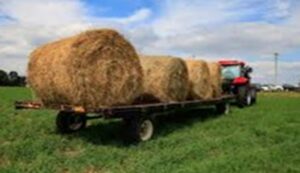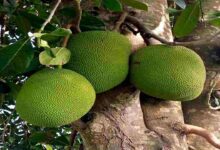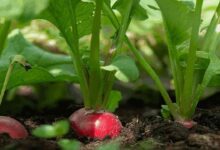Paddy Straw Management: If you also throw away the paddy straw, considering it useless, then definitely read this news
Paddy Straw Management: In a few days, paddy crops—which are already sprouting ears—will be harvested. Like every year, this year too it will present itself as a major issue if the straw that is left behind after harvesting rice is not properly handled. As a result, it is crucial to think about its appropriate administration in due course. An essential component of environmentally conscious farming and sustainable agriculture is the management of paddy straw. A collection of stalks and leaves from rice plants that remain after paddy is harvested is known as paddy straw.

Environmental issues, including soil erosion, water pollution, and air pollution, are caused by improper handling of paddy straw. This post will go over a number of techniques and approaches for managing paddy straw efficiently while reducing its harmful effects on the environment.
Management of Paddy Straw
Across the globe, paddy-producing regions have a significant issue in managing their straw. Since rice is a staple crop for over half of the world’s population, paddy straw is a frequent agricultural waste product. Paddy straw has traditionally been disposed of by farmers by burning it or allowing it to decompose in the fields. These methods are seen to be detrimental to the environment, however.
Impact on the Environment
Prior to talking about paddy straw management techniques, it’s critical to comprehend the negative effects improper management has on the ecosystem, including.
Air pollution: Burning paddy straw releases greenhouse gasses and particulate particles into the atmosphere. Climate change and poor air quality are both impacted by this.
Water Pollution: The decomposition of paddy straw in soggy fields releases chemicals and nutrients that contaminate water supplies and lead to eutrophication.
Soil Erosion: The incomplete breakdown of paddy straw in the field lowers soil quality, makes it more difficult for crops to absorb nutrients, and encourages the spread of pests and illnesses.
Wastage of Resources: Paddy straw has important nutrients that, with the right care, may be reincorporated into the soil for the benefit of subsequent crops.
How Are Paddy Straws Managed?
1. Mechanical Management
Mechanical operations are among the most often used techniques for handling paddy straw management. It entails handling and processing the straw using technology such as…
Straw Chopper/Shredder: By chopping paddy straw into tiny bits, these devices facilitate its incorporation into the soil. The chopped straw breaks down more quickly.
Baler: Balers take paddy straw and make it into small, controllable balls that may be sold to generate cash or used as animal bedding.
2. Assimilation into the Earth
One efficient technique to control the soil and boost soil fertility is to add paddy straw to the soil, as in the following examples:
Tillage: Using a variety of tillage tools, the straw is plowed into the soil to accelerate its breakdown and enhance the structure of the soil.
Mulching: Using finely chopped straw as a surface mulch on soil helps retain moisture, inhibits weed growth, and breaks down gradually.
3. Disintegration of Living Things
One component of organic approaches is the use of microorganisms, such…, to break down paddy straw.
Composting: You may aid beneficial bacteria in breaking down rice straw and converting it into nutrient-rich humus by mixing it with other organic materials to make compost heaps.
Vermicomposting: Better vermicompost may be produced by using earthworms to speed up the decomposition of paddy straw.
4. Additional Uses
Think about using paddy straw for purposes other than trash, such…
Animal Feed: Paddy straw is given to animals after it has been chopped or processed.
Mushroom Cultivation: Growing mushrooms on straw makes for an excellent substrate that might bring in more money.
5. Bioenergy Production
Among the processes used to produce bioenergy from paddy straw are…
Production of Biogas: Anaerobic digestion may be used to transform paddy straw into biogas, a sustainable energy source.
Bioethanol Production: Paddy straw may be converted to bioethanol, which is subsequently used as fuel.
6. Governmental Policies and Initiatives
Many nations are putting these kinds of policies into place to encourage the proper handling of paddy straw.
Subsidies: By offering financial aid for the purchase of machinery or the use of environmentally friendly methods, farmers may be persuaded to treat paddy straw properly.
Awareness-raising campaigns: It’s important to educate the general public and farmers about the need to handling straw in an ethical manner.
7. Farmer Partnerships
Paddy straw management may be cooperatively managed by farmers through:
Straw bank: Community straw banks should be established so that farmers may share and store straw for a variety of uses.
Contract Farming: Collaborating with businesses or institutions that can produce compost or biofuel from paddy straw.
Thus, sustainable agriculture and environmental preservation depend on the efficient management of paddy straw. There are many strategies to lessen the detrimental effects of inappropriate disposal, including resource waste, soil erosion, and contamination of the air and water. Among the sustainable methods are mechanical management, soil integration, biological decomposition, alternative applications, and bioenergy generation. In addition, farmer partnerships, government initiatives, and awareness campaigns are essential for encouraging ethical paddy straw management. By using these tactics, we can make sure that paddy straw turns into an advantageous resource rather than a burden on the environment, promoting the sustainability of both the environment and agriculture.

